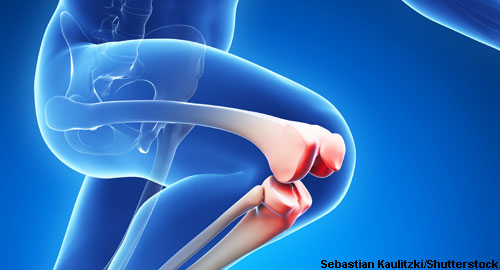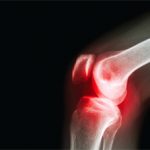 In a new study published in the Journal of the American Academy of Orthopaedic Surgeons, researchers performed a network meta-analysis (NMA) of high-quality clinical trials to determine the clinical effectiveness of non-surgical treatments for knee osteoarthritis (OA). Acetaminophen, intra-articular corticosteroids, intra-articular platelet-rich plasma, intra-articular hyaluronic acid and non-steroidal anti-inflammatory agents (NSAIDs) were compared with each other. The NSAIDs included celecoxib, diclofenac, ibuprofen and naproxen. These treatment options were also compared with oral and intra-articular placebo.1
In a new study published in the Journal of the American Academy of Orthopaedic Surgeons, researchers performed a network meta-analysis (NMA) of high-quality clinical trials to determine the clinical effectiveness of non-surgical treatments for knee osteoarthritis (OA). Acetaminophen, intra-articular corticosteroids, intra-articular platelet-rich plasma, intra-articular hyaluronic acid and non-steroidal anti-inflammatory agents (NSAIDs) were compared with each other. The NSAIDs included celecoxib, diclofenac, ibuprofen and naproxen. These treatment options were also compared with oral and intra-articular placebo.1
Researchers systematically searched PubMed, EMBASE and Cochrane Central Register of Controlled Trials for articles on knee OA treatments through Oct. 7, 2015. Inclusion criteria for the analysis were target population; randomized controlled trials; English language; human subjects; treatments, outcomes, comparisons of interest; a minimum of 30 patients per group; and a 28-day follow-up. Two abstractors independently analyzed function and pain data. On the initial search, 2,956 articles were returned. The abstractors reviewed each abstract and, then, 727 full-text articles were retrieved. Of these, 79 randomized controlled trials met all inclusion criteria for the network meta-analysis. Of these, 26 articles were excluded because they were not the best available evidence defined in the study selection section. Therefore, 53 studies were evaluated.
For reducing pain, intra-articular corticosteroids imparted the greatest short-term pain relief, followed by ibuprofen, intra-articular platelet-rich plasma, naproxen and celecoxib. All active treatments showed significance over oral placebo.
For improving function, naproxen ranked the highest, followed by diclofenac, celecoxib, ibuprofen, intra-articular platelet-rich plasma and intra-articular corticosteroids. Additionally, naproxen was the only treatment that showed clinical significance compared with oral placebo. Cumulative probabilities showed that naproxen was the most effective monotherapy and, when used in combination with intra-articular corticosteroids, would be the most probable treatment to improve both function and pain in these patients.
Intra-articular hyaluronic acid did not rank in the top five treatments. It ranked sixth for pain and seventh for function. A further analysis of 12 studies using hyaluronic acid in knee OA patients found these agents do not significantly reduce pain or improve function any differently than intra-articular placebo.
This study showed naproxen ranked as the most effective treatment among non-surgical knee OA treatments. This agent should be considered when treating pain and function. Naproxen also has the advantage of relative safety and low cost. This treatment may not be the best option for all patients, but provides a guide for managing knee OA patients with different treatment options.
Michele B. Kaufman, PharmD, BCGP, is a freelance medical writer based in New York City and a pharmacist at New York Presbyterian Lower Manhattan Hospital.=


